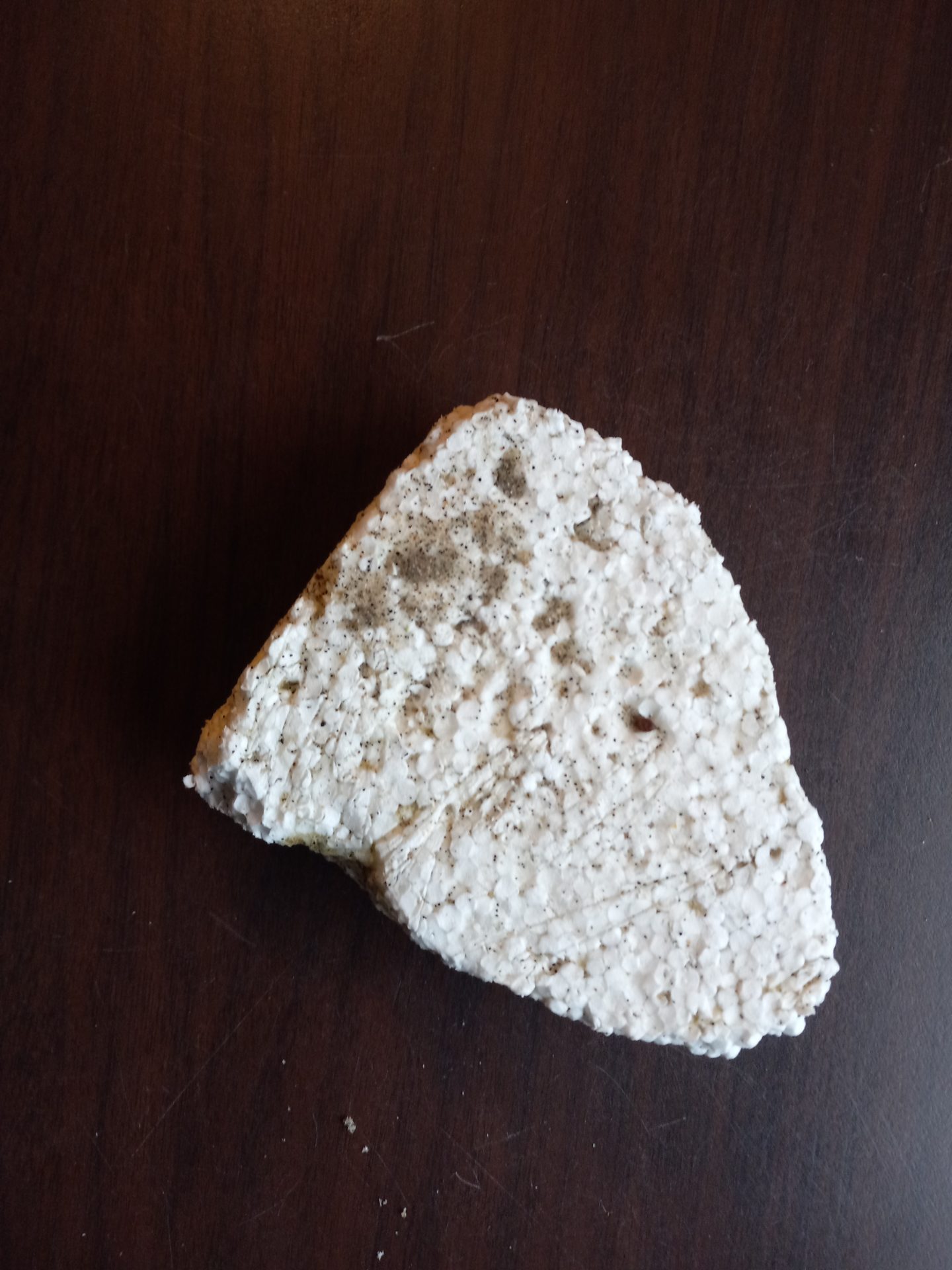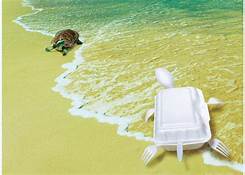This last December I was at Rockaway Beach, Oregon, enjoying a walk on the beach. I came across this piece of Styrofoam in the sand. I picked it up of course, to throw it away. At that time, I had been reading a book called The Ocean of Life, by Callum Roberts. I had just read about the problem of microplastics in our ocean, and the contribution they have to the destruction of life. It occurred to me how many times we take a Styrofoam cooler for a day at the beach. Fragile as they are, it is not unusual that they end up in pieces on the beach and in the ocean.

Most common debris in our waters
The numbers supporting this are staggering. Greenpeace states, “The scale of contamination of the marine environment by plastic debris is vast.” EPS foam is one of the main culprits, ranking second in total beach debris in Southern California, based on a recent study. Further, plastic pollution and specifically “polystyrene foam (what we call Styrofoam) comprises 90% of all marine debris, with single-use food and beverage containers being one of the most common items found in ocean and coastal surveys.”
And it’s only getting worse, as polystyrene flows into our oceans at an alarming rate. In 2015, the Worldwatch Institute revealed that 10 to 20 million tons of plastic finds its way into our world’s oceans every year. That equates to more than 75,000 pounds of toxic water pollution every minute. That was 7 years ago!

Washington state bans polystyrene foam
A new law restricting restaurants’ use of disposable plastic items, requiring recycled content in some plastic bottles and bags, and as well bans most uses of polystyrene foam, including cups, clamshell containers, packing peanuts, and coolers. Restaurants will soon be required by law to not give out single use plastic utensils, straws or lids, unless requested by the customer.
Supporters call it the nation’s toughest law on plastics.
Washington is the sixth state to ban polystyrene foam items and the first to ban the foam coolers. Washington ban on packing peanuts will be effective June 2023; coolers and foodservice products ban will be effective June 2024
Statewide bans in Vermont and Maine will also be going into effect over the next two years. New Jersey is poised to pass an ambitious plan to ban along with many more single-use plastics. The concern has become less about landfills, and more about plastics found in the ocean and other bodies of water.
Companies Making a Difference
The following video is about a company in Mexico City that is recycling polystyrene foam and making frames. The company is looking for other items to create with the recycled material, however toxins in plastic products is well known, and could cause health problems.
Pacific Seafood is a wholesale distributer of seafood here in the Portland Metro area. Styrofoam is used to receive and ship much of their seafood to retailers. Instead of sending Styrofoam collected at Oregon and Washington distribution facilities to landfills, Pacific Seafood invested in a machine to break down the polystyrene for reuse. One pallet of Styrofoam, which is approximately four feet by six feet in size, is condensed into a two-foot block called an ingot, which is later ground into beads that are used in molding, picture frames, cameras and other consumer goods. Much the same process as the company in Mexico City. I toured Pac Seafood a couple of years ago and did see this machine. At that time I didn’t realize the impact microplastics have on our oceans, but now I can fully appriciate Pacific Seafoods commitment to waste reduction and protecting our oceans ecosystem.
Microplastics are in our food, the air, and even our drinking water. All these microplastics that make their way to the ocean are consumed by fish, the same fish eaten by larger fish and marine mammals. The same fish we eat.


So sad. Interesting information. Thank you.